Brilliant Maps
Making Sense Of The World, One Map At A Time

Star Trek Map Of The Alpha & Beta Quadrants
Last Updated: March 3, 2023 25 Comments
The map above is Shakaar’s Alpha/Beta map v3.3; a fan-made creation showing the Alpha and Beta quadrants of the Star Trek universe.
The map shows both major and minor powers that have appeared in the various series over the years.
At the centre is the United Federation of Planets, which borders the major power of the Klingon Empire, Roman Star Empire and the Cardassian Union. More minor powers include the Breen, Ferengi Alliance, Tholian Assembly, Sheliak Corporate and the Gorn Hegemony among many, many others.
The map highlights:
- Principal Systems
- Minor Systems
- Non-Aligned Systems
- Dead Systems
- Government Borders
- Points of Interest
- Navigation Hazards
- Star Clusters
- Stations or Starbases
For more Star Trek maps see:
- Star Trek Stellar Cartography: The Starfleet Reference Library
- Star Trek Star Charts: The Complete Atlas of Star Trek
- Star Trek Maps
Enjoy this map? Please help us by sharing it:
Click To Get My 10 Best Brilliant Maps For Free:
Other popular maps.
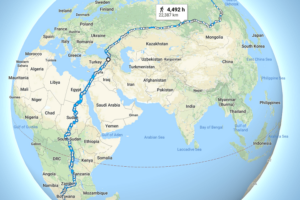
Is This The World’s Longest Continuous Walk? Cape Town To Magadan

The Most Hated Sports Team In Each State & Province
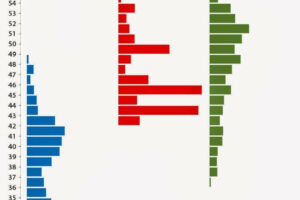
Counterintuitive Comparison Of Relative Population Latitudes Of US, Canada & Europe
D-day (june 6th, 1944) landing maps.

US State Highway Route Marker Shields

Population Growth In Western European Countries Between 1950 & 2020

Map Showing Gun Deaths In South America

11 Public Transport Travel Time Maps: Europe vs The United States
December 13, 2017 at 8:14 pm
I know that: a) it’s a bit of fun b) it’s hard to make a 2d map of 3d space and c) there no official maps to go off
But Christ, there’s a lot of stuff on here which makes no sense.
Justin Spaulding says
September 7, 2019 at 2:36 am
Isn’t gamma haromi 2 supposed to be in the haromi cluster…. Good effort though! S3. E8 I think. The “gatherers”
Danny Beans says
November 11, 2019 at 11:18 pm
Why are Ceti Alpha V and Ceti Alpha VI in completely different sectors? I mean, okay, Chekov can be a little dumb sometimes, but that’s one helluva mistake to make.
Jadziah Dax says
April 7, 2021 at 6:03 pm
Can’t wait to see the one you do!
petewinsemiusyahoocom says
November 23, 2022 at 3:47 pm
I agree, several planets said to be in the alpha quadrant are in the beta quadrant and vice versa or not listed at all.
Resolute_Phoenix says
February 8, 2018 at 11:41 pm
Okay so Xindus by Vulcan…. kys I’m not even gona bother looking further don’t make a map if you don’t know what your talking about
February 18, 2019 at 9:03 pm
Romulons should have Dyson sphere (at least at Romulus and Remus). Their ship tech is based on creating black holes which will give a ship a reactor core with a life of a handful of years BUT it’s just like an inefficient battery because it takes way more energy to initially create it then it will give off over its life BUT it’s portable. Sure beats light sails if your depending on home system energy and way more flexible too. This was their tech wheelhouse, and was their interstellar travel energy source instead of antimatter. It makes total sense for them to have harnessed the majority of their native suns energy to create reactor cores wherever they needed a portable energy that couldn’t tap into the system wide grid.
February 22, 2019 at 9:26 pm
A few questions… 1) Why are there several Indus VIII on the map?, 2) I do not see the First Federation on this map — they should be near the Ferengi!, 3) Where is the Kelvin planet? (The planet colonized by the Kelvins from “By Any Other Name”), 4) Maybe I’m wrong, but I do not see the Dyson Sphere that TNG crew ran into?
Shane Montgomery says
March 4, 2020 at 10:25 pm
I don’t see Barzan II or the Barzan Wormhole here?
Pickard says
January 23, 2021 at 3:39 pm
They are there. Literally the only Dyson sphere symbol near the bottom.
Jonathan Dumire says
September 7, 2023 at 2:29 am
There are 2 Cygnet XIV on the map as well
August 6, 2019 at 5:03 pm
Spock: He is intelligent, but not experienced. His pattern indicates two dimensional thinking.
Glenn Bryson says
November 15, 2019 at 6:52 pm
Not your fault, I know;
Vulcan is “Supposed” to be “A little over sixteen” light years from earth. Yet the map has it at around 1000. That’s one of my biggest gripes about Star Trek (I absolutely love Star Trek, don’t get me wrong). Distances and travel times are so inconsistent and unrealistic based on the documented scales, maps, etc.
March 14, 2020 at 11:46 pm
Did you mean Starbase 375 instead of 395? As in the starbase from S6 of DS9 after the Dominion took over the station?
Avro Arrow says
March 24, 2020 at 7:04 pm
I love this map, especially how you have the Hydran Kingdom, the Lyran Star Empire and the Kzinti Hegemony are listed (where is the Interstellar Concordium?). I have one small nit-pick to make and that is you have two systems named “Nelvana III”. They’re both in the upspin Beta quadrant but one is in the Romulan Neutral Zone and the other is further upspin and outward (left). I think that you might consider making most of the empty space that is coreward of Klingon and Romulan space into the ISC. They were referred to as being a Galactic Superpower residing on the far side of both those Empires (so, coreward).
Gray.Elton says
May 19, 2020 at 3:21 am
If we do or don’t do it, someone will laugh
July 15, 2020 at 1:53 am
I dont understand how this can be called a map of the star trek galaxy when there isnt even a spot or indication of where earth is. Who makes a map without earth when you have a series where its location is based on earth. In the series they refer to Earth as Earth. Yet the closes thing to it is on the map is Volcan. Y not add Earth as well? If there is an alternative name how come it’s never mentioned in the shows and a secret for fans?
Brandon says
August 15, 2020 at 4:14 pm
Earth is 100 percent there. It’s Sol. It’s a common alternate name for our star system and has been used in Trek.
February 8, 2021 at 3:26 pm
Sol system. The Greek word for sun. Follow the bold line and look for the team Terran and Vulcan sectors. Sol is on the 4 corners there
May 23, 2021 at 11:35 pm
Cheron is not in the Romulan sphere of influence. It is located in the “Southern most part of the Galaxy”, Captain Kirk. Episode “Let That Be Your Last Battlefield”
That dude says
September 6, 2021 at 5:31 am
Issues: Tykens rift, not Titans. Starbase 47 is about 10 sectors off as memory Beta says it is located between the Tholian assembly and the Klingon empire. Prophets Landing is in the gamma quadrant.
That’s all for now!
That Guy says
May 17, 2022 at 11:20 pm
Alpha Onias III is on here multiple times
John S says
November 16, 2022 at 4:31 am
Don’t the Klingon and Cardassian Empires border each other? A lot of DS9 s4 doesn’t make sense if they don’t…
martijn says
March 18, 2023 at 11:16 pm
where is earth ?
Your Mom says
May 29, 2023 at 2:05 am
You’ve got 2 Nelvana III.
Leave a Reply Cancel reply
Your email address will not be published. Required fields are marked *
This site uses Akismet to reduce spam. Learn how your comment data is processed .
Screen Rant
Star trek's 4 quadrants & galaxy explained.

Your changes have been saved
Email is sent
Email has already been sent
Please verify your email address.
You’ve reached your account maximum for followed topics.
Star Trek Isn’t Supposed To Have Money: What Is Latinum?
Star trek explains why it uses 'quadrants' despite the universe being infinite, after 57 years, star trek settles the truth about trelane's godlike species.
Most of the action in Star Trek takes place in the real-world Milky Way Galaxy which is roughly divided into four quadrants, named after the first four letters of the Greek alphabet: Alpha, Beta, Gamma, and Delta. These are the galactic regions that include significant planets like Vulcan, Qo'noS, and of course, Earth. While Gamma and Delta still bear planets with ominous origins, the Alpha and Beta Quadrants are perhaps touched upon the most within the Star Trek mythos. Despite this common division, The Next Generation also referred to a new quadrant known as Morgana. But not much is known about this certain quadrant as it is not mentioned any further.
Even beyond the Quadrants, ardent Star Trek fans can spot the Galactic Barrier and several other celestial objects that are present in other galaxies like the Andromeda Galaxy (yet another real-world phenomenon) that are still yet to be explored more by the franchise's protagonists. While most of these galactic quadrants can be seen as astronomical phenomena rooted in scientific explanation, the mythos can also incorporate near-godly beings like the Sha Ka Ree in regions such as the so-called "Great Barrier." The two Barriers carry within them such heavenly mysteries that deserve explanations of their own.
TOS Invented Star Trek's Best Time Travel
Alpha Quadrant
The Star Trek galaxy explained that the Alpha Quadrant contains more than 60 home worlds, and this includes Captain Kirk's home planet Earth itself (which Trekkers would call Terra or Sol III). Other major planets include the Tellarite native planet Tellar Prime, Trill, which houses both the eponymous humanoid species and the non-humanoid Trill symbionts, and Betazed, which is inhabited by the Betazoids, a humanoid species that boasts warp-capable space vessels. Even though the majority of territories under the Klingon Empire and Romulan Star Empire fall in the Beta Quadrant, the two forces join the United Federation of Planets and the Cardassian Union to constitute the four great powers in the Alpha Quadrant in the late 24th century.
Beta Quadrant
The Star Trek galaxy explained that apart from the Romulans and the different versions of the Klingons , the Beta Quadrant's highlight is Vulcan, the native planet of Spock and other members of the Vulcan species. Multiple Star Trek encyclopedias suggest that Vulcan is located in a Sector of the same name within the Beta Quadrant. The 2002 publication Star Trek Charts also estimates Vulcan's exact position to be somewhere in the 40 Eridani star system that really exists 16.3 light years from Earth's Sun. Much like Spock, the inhabitants of Vulcan can be identified with their raised eyebrows and pointy ears. Mostly devoid of emotions, the Vulcans are known for leading a life on the basis of logic and reasoning.
The Klingon homeworld Qo'noS and the Romulan Empire's native planet Romulus also fall under this galactic quadrant. The former has a chaotic weather system with frequent thunderstorms and a rocky landscape characterized by numerous dormant volcanoes and caves. The native warrior species of Klingon are bound by their martial traditions and value honor in combat. As for Romulus, the planet served as the second home for Romulans ever since they migrated from Vulcan. The biological cousins of the Vulcans, they had to move back to their original homeworld after Romulus' sun exploded in 2387. According to The Next Generation , Risa is also a part of this quadrant. Known as the pleasure planet, Risa is known for its sexually liberated culture.
Gamma Quadrant
The Star Trek galaxy explained that the Gamma quadrant includes several Star Trek planets such as Brax, Yadera, Meridian, and others. As seen in Deep Space Nine , the Quadrant also houses the Dominion, an aggressive ensemble of several alien species commanded by the shape-shifting Changelings (AKA the Founders). Several territories of the quadrant are under the Founders' control even though they have had only two home worlds. The first home world of the Founders was a rogue planet that housed the Founders who were, at that time, escaping prosecution from the "solids" (how they referred to non-shape shifters). By 2372, the Founders shifted to a second home world.
Related: Star Trek - Spock's Entire Prime Universe Timeline, Explained
Delta Quadrant
The Star Trek galaxy explained that Star Trek: First Contact confirms the origin of the Borgs from Delta but doesn't name their home planet. This is the case for many other species of Delta, a quadrant that is relatively unexplored by the United Federation. Only Voyager offers the most details about the planets within the quadrant. Delta is also known as the domain of antagonistic species like the Borgs, the Kazon, and the Vidiians. The cybernetic Borgs are mostly linked through a hive mind known as the Collective. As for the Kazon, they are nomadic in nature which makes it difficult to trace their planet. Vidiians are similarly migratory and sport-scarred faces as a result of the terrible Phage pandemic.
The Galactic Barrier
The Star Trek galaxy explained in the original series what is known as Star Trek 's Galactic Barrier . In the subsequent years, Trekkers have called it by many names ranging from Great Barrier to the Energy Barrier, but there is still much debate and discussion regarding the origin of this energy field that surrounds the Milky Way Galaxy. The origins behind its creation are still hotly debated so it is uncertain whether the Galactic Barrier was created by a natural process or by artificial means. Most of the conventional spaceships that have tried crossing this barrier in the Star Trek universe have often been destroyed with the crew even gaining psychoactive traits while nearing the barrier.
The Andromeda Galaxy
Progressive exploration of the Star Trek galaxy explained that the Milky Way Galaxy is definitely not the final frontier , as several other galaxies lie beyond it, such as the Andromeda Galaxy. This serves as a home for the planet Kelva, the capital of the Kelvan Empire. The Kelvans are highly intelligent shapeshifters. Because of their intellectual superiority, the Kelvans feel that it is their duty to rule over other species. The same galaxy also includes the humanoid species simply known as the Makers, creators of service robots and outposts in both the Andromeda and Milky Way Galaxy. The outposts were a residential necessity given how a supernova had destroyed their homeworld.
The Extragalactic Species
The Star Trek galaxy explained that the spanning areas of planets and species that border Star Trek 's Galactic Barrier from the galaxies beyond the Milky Way are still vague in Star Trek canon. Still, some information has been obtained on a few humanoid and non-humanoid extragalactic species. Species 10-C is a major case in point. A highly-advanced non-humanoid race with members much larger than humans, the species is responsible for creating the heavily destructive Dark Matter Anomaly. With their bodies adapted to float in gas layers, Species 10-C belong to a homeworld near the Galactic Barrier. Other such examples of extragalactic species include the "space amoeba" Nacene, the physically fragile Ornithoid, and immortal races like the Q and the Douwd.
Related: Star Trek Just Created A Second 25th Century Timeline
The Center Of The Galaxy
Star Trek V: The Final Frontier reveals the presence of the mythological planet Sha Ka Ree right at the center of the galaxy that doesn't fall under any quadrant. An equivalent of the concept of heaven, Sha Ka Ree is regarded in Vulcan mythology as the realm of all creation. But owing to humankind's fear of exploring the unknown and the second Galactic Barrier, the exact physical nature remains unexplored and is regarded as a mythical entity. It goes to prove how the mysteries of Star Trek 's chief galaxy don't just go beyond its exterior but its very core too.
Multiple Alternate Realities And Timelines
Not only is there several quadrants, but the Star Trek galaxy explained that there are also several alternate timelines in the franchise's world. In the Paramount+ series Picard , there is an alternate reality that completely rewrites Star Trek's history . The movies, from the original series to the Next Generation, take place in what is known as the Prime Universe. The J.J. Abrams movies take place in what is known as the Kelvin Timeline.
Abrams showed this in his movies by having the Kelvin Timeline Spock meet a Spock from a different timeline. This allowed Star Trek to move on with any story it wanted to tell by explaining the characters are from different timelines with new and fresh histories. There is also a Mirror Universe, an alternate timeline ruled by the fascist Terran Empire instead of the Federation. With so many quadrants, they all likely ended up very different in each timeline, making the Star Trek stories endless.
More: Why TOS Never Got A Series Finale Until Star Trek VI
- Movies & TV
- Big on the Internet
- About Us & Contact
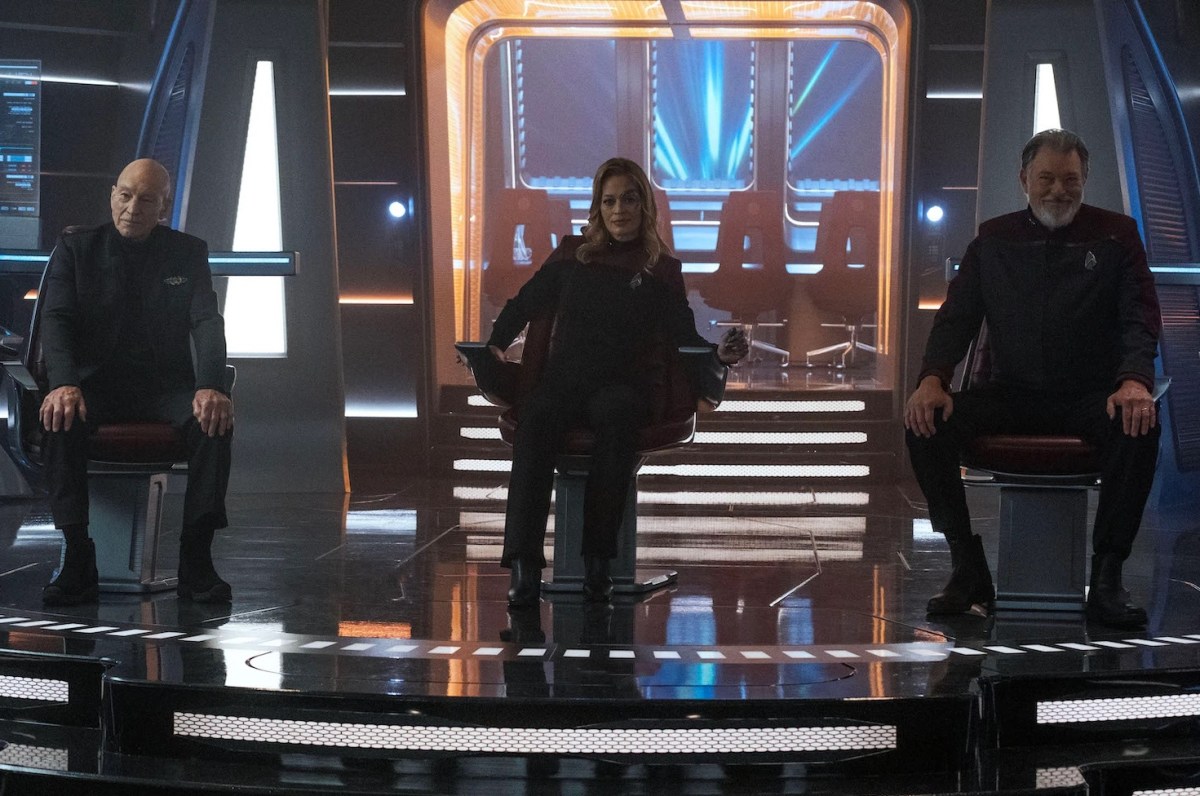
A Wannabe Blue Shirt Officer’s Guide to the Map of the Galaxy in ‘Star Trek’
No matter the fictional universe— be it fantasy or sci-fi or somewhere in between (looking at you, space operas)—I’ve always found maps and cartography one of the most fascinating parts of worldbuilding. There’s something about actually seeing how an author imagines the setting of their story that immediately grounds it in the realm of possibility, and helps immerse viewers in the worlds in which these stories unfold.
Sure, it’s somehow easier when the map consists of a single continent, kingdom, or city on Earth or any other Earth-like location. Bringing the action up into space definitely makes everything a tad more complicated—and a whole lot more fascinating.
And now that the third season of Star Trek: Picard is in full swing , there’s no better time to refresh our collective memory on the “astrogeography” the crews of the USS Enterprise explore.
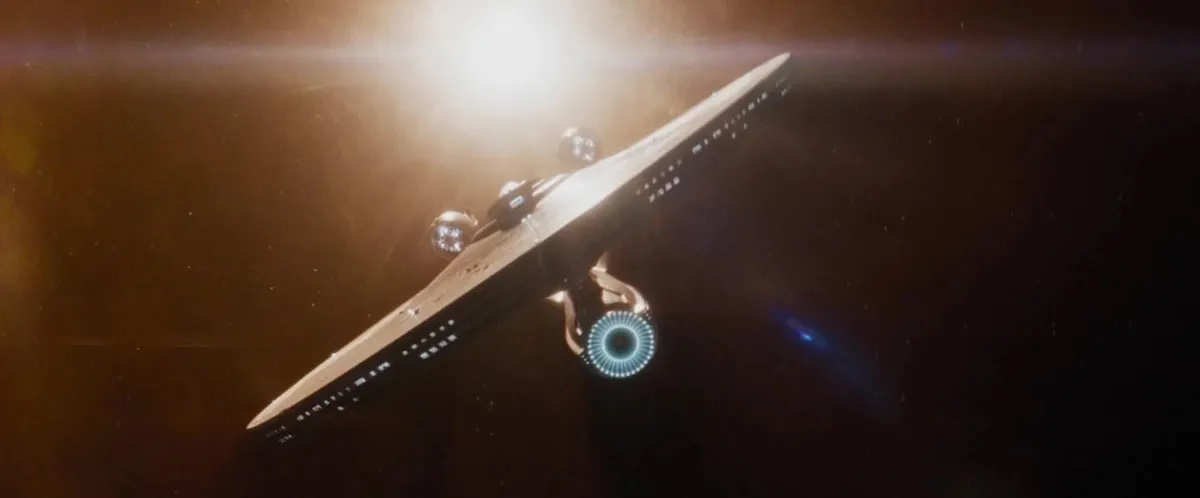
Star Trek and maps
The decades that have passed since Star Trek first premiered on television screens have made it possible for the saga to acquire beautifully complex and detailed lore on pretty much everything related to it—including the planets that make up the United Federation of Planets, and the powers that border it, like the infamous Klingon Empire.
There have actually been several maps made for Star Trek and its locations over the years, as it reads on The Map Room blog . “While original series canon assigned aliens to known nearby stars, and the shows occasionally used real locations, episode writers did not start with a map and generally did not take spatial relationships into consideration, which no doubt has made the belated mapping process a bit more challenging,” The Map Room blog continues, explaining how creating a comprehensive map of the Star Trek galaxy might be easier said than done.
Still, while none of the maps ever put to print or screen have ever been accepted as official canon, most of them have the major power players of the galaxy in more or less the same location. This means we can reasonably assume that this is the actual position in which they can be found in-universe.
The galaxy quadrants
Most of the action in the Star Trek canon takes place within our galaxy, the Milky Way, which has been divided into its famous four primary quadrants, each named after a letter in the Greek alphabet: Alpha, Beta, Gamma, and Delta.
The Alpha and Beta quadrants are the ones that are better known, even in-universe, and that house many of the major players we see throughout the various series—the United Federation of Planets chiefest of all. The Federation has a strong foothold in both quadrants, spanning Alpha and Beta from their shared border outwards.
According to Memory Alpha , the official Star Trek fan wiki, the Alpha quadrant contains two all-important planets that we all know very well: Earth, from which a good majority of the characters in Star Trek canon hail; and Vulcan, the homeworld of the Vulcans and especially of Spock. This quadrant also contains the Cardassian Union, the Ferengi Alliance, and the Breen Confederacy—among other smaller factions—whose representatives make an appearance in the canon, particularly in Star Trek: Deep Space Nine .
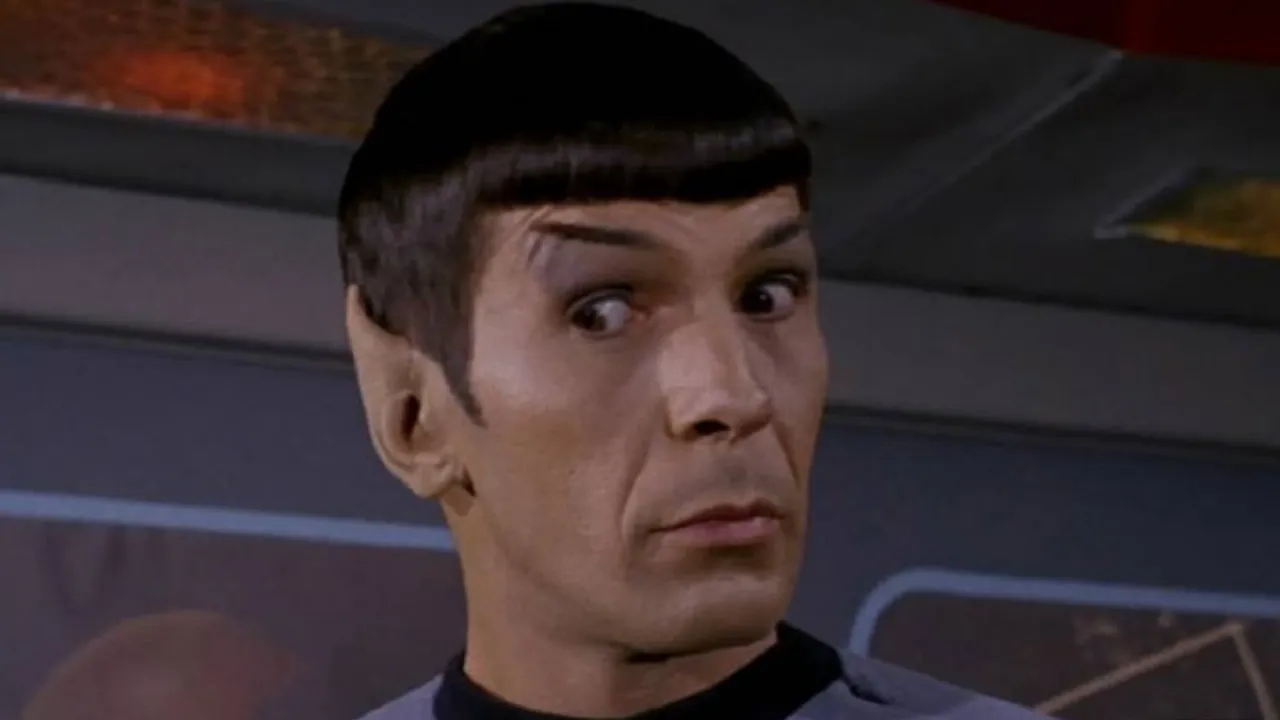
The Beta quadrant includes a couple of relatively smaller players like the Nyberrite Alliance and the Tholian Assembly, and then the major forces of the Romulan Star Empire and the infamous Klingon Empire—who both have their respective homeworlds, Romulus and Qo’noS, in this quadrant.
In contrast to the Alpha and Beta quadrants, the Gamma and Delta quadrants are considerably less well-known and less visited—which makes sense, considering the notable distances that separate them from the other areas of the galaxy, which would require years to bridge even at warp speed. Their reputation also isn’t as stellar as the areas in Federation space.
Still, they are of course mentioned time and again in the canon, as are the planets and people located within them. The Delta quadrant, for example, is the place of origin of the infamous Borg Collective, made up of the terrible Borg cyborgs.
(featured image: Paramount+)

- Milky Way Galaxy An overview of the entire galaxy .
- Gamma Quadrant The Gamma Quadrant was first surveyed by the Quadros-1 probe, launched during the 22nd century. After initial discovery of the Bajoran Wormhole in 2369 extensive exploration began, which unfortunately also led to one of the most devastating wars in Federation history: The Dominion War.
- Local Space The extents of the federation space and of many other powers.
- UFP Main Core The Federation Main Core is a extensive map of the Federation's birth place. The founding and many early members are situated here, as well as the Federation's most important trading partners, the major borders to other powers, species and all the core worlds of the Federation.
- 22nd Century (Enterprise NX-01 ) A historical map of the explored space in the mid 22nd century. The destinations of Enterprise's (NX-01) journey can be found here, including the Delphic Expanse and other halts, which ultimately led to the foundation of the United Federation of Planets in 2161.
- Global Location Search Haven't found what you're looking for? Most of the known locations can be searched and hopefully found by simply using the global search for all maps at once, additionally you can still use the local searches which are implemented in every map.
Tabletop RPG Podcast and Roleplaying Resources
- Saturday Night Dice
- Heroes of Arnor Campaign Overview
- Session & XP Logs
- Map: Arnor in the 1640s
- Map: Environs of Elnost
- Resources & Best Practices
- Rules Q&A
- Organized Play
- Level Tracking
- Key D&D Rules Q&A
- Player Codex (Google Doc)
- Cheat Sheat: People, Places, & Things
- Adventure Log
- Campaign Charter
- Campaign Map
- Legends of Redmark
- Western Reach
- Saltshore Islands
- Oskarrian Archipelago
- Hex & Region Write-ups
- Cast of Characters
- Character Creation
- Campaign Overview
- House Rules
- Season 1 Characters
- Session Logs & News
- Stardates and Timeline
Star Trek Galactic Map
- The Taurus Reach and Starbase 47 (Vanguard)
- Podcasting Best Practices
- 50 Fathoms- Campaign Charter
- Lore of the Atani
- Father Rodrigo Torquemada Salvatore
- Liam McCormic
- Mordecai Boon
- Map of Caribdus
- General Locations
- Notable NPCs
- Cypher System Resources
- Eilar Character Sheet
- Skirmish Debriefs
- Adventure Logs & Crawls
- Star Wars XP Log
- People, Places & Things
- Campaign Overview & House Rules
- Arkanis Sector
- Key Star Systems
- Rel Thaxton
- Adventure Logs
- Reich America
- Iron Oak Saga
- Dwellers(PCs)
- Setting Aspects
- Castle Matos
- Flining ‘Flin’ Parthad
- Philip Windsor
- Samson “Sam” Roth
- People, Places and Things
- SS Behemoth — Campaign Map
- Traveller Links & Resources
- Leviathan: Campaign Overview & House Rules
- Leviathan: XP Log
- The Neutron Star Directive
- Favorite RPGs
- Battlemat Suppliers
- Wargames Articles
- Wargames Roadmap
- 15mm Miniatures Resources
- Starship Miniatures
- Sword and Spear Resources
- Skirmish Movement Trays
- Stan’s Reading Lists
- Board Games
- Flickr Photos
- Conventions
Here’s the current map of Star Trek Federation Space and the Taurus Reach I’m using. I might make my own at some point.
Download the full Galaxy Map PDF (9 Meg).

The Taurus Reach
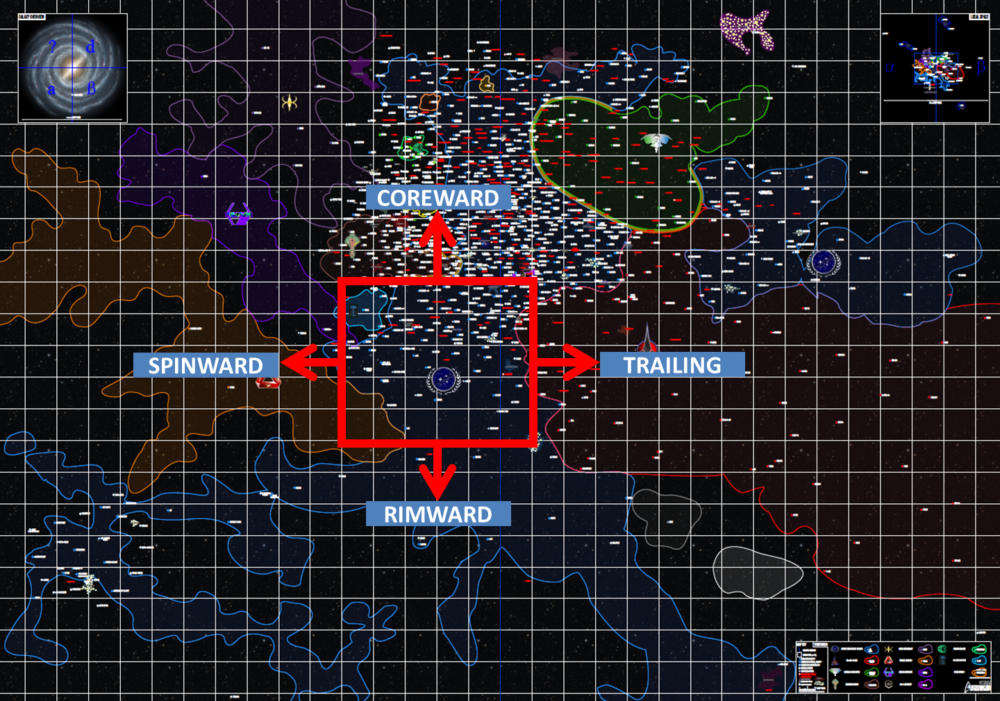
Galactic Map Directions
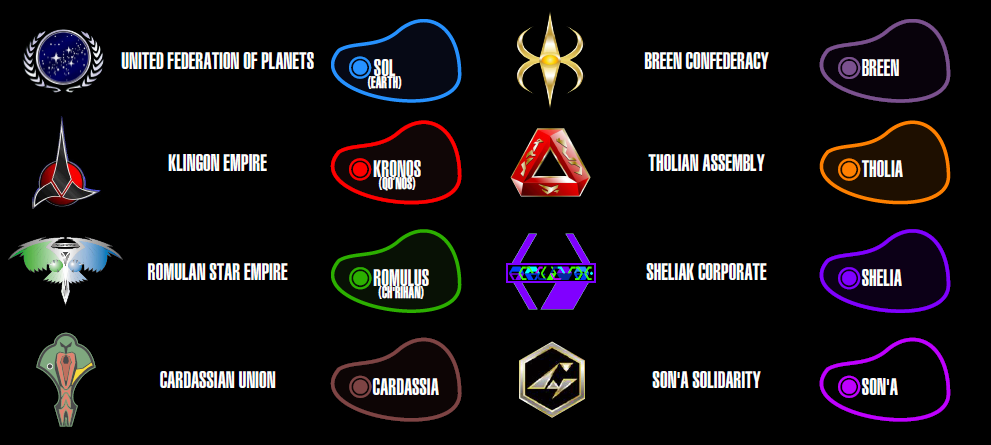
Galactic Territories
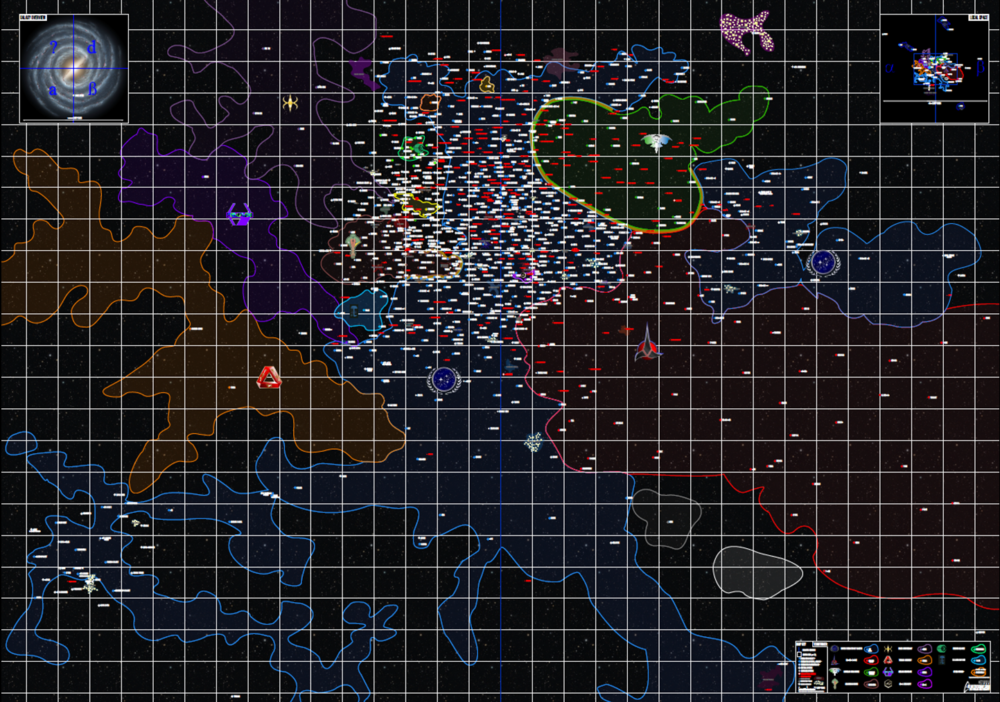
Galactic Map
Dicehaven Podcast

Dicehaven is an actual play podcast featuring various tabletop RPGs. We’re currently playing Imperium using the Traveller RPG (Mongoose 2nd Edition).

Listen now to our first episode.
Listen to us on iTunes, Spotify, and other platforms (links are at anchor.fm/dicehaven ).
Follow our Instagram posts at instagram.com/dicehavenpodcast .
Hello and welcome to Dicehaven! We are a game club in the DFW area who play tabletop roleplaying games. Check out our RPG podcast and our musings and resources on roleplaying.
Recent Comments
- Stan Shinn on Star Wars ‘Shinn Canon’
- Jeffrey Webb on Star Wars ‘Shinn Canon’
- Stan Shinn on Top Stuff I Want To Run Someday (Late 2023 Edition)
- Gary Fredrick Furash on Top Stuff I Want To Run Someday (Late 2023 Edition)
- Stan Shinn on Running Old-School Modules as Backup Games
- Entries feed
- Comments feed
- WordPress.org
© 2024 Dicehaven
Theme by Anders Noren — Up ↑

A map of the Milky Way's four primary quadrants
In stellar cartography , a quadrant is a major region of space encompassing a portion of a galaxy .
- 1 Major quadrants
- 2 Minor quadrants
- 3.1 Background information
- 3.2 External link
Major quadrants [ ]
The Milky Way Galaxy was commonly divided into four equally sized, cubic quadrants, defined by one meridian passing through the galactic core and a second one perpendicular to the first, that also passes through the galactic core. These four quadrants are referred to as the Alpha Quadrant , Beta Quadrant , Gamma Quadrant and Delta Quadrant . The United Federation of Planets and its neighboring powers, including the Klingon and Romulan Empires , were located in the Alpha and Beta Quadrants, whereas the Borg Collective was located in the Delta Quadrant, and the Dominion in the Gamma Quadrant. ( Star Trek VI: The Undiscovered Country ; ENT : " Regeneration "; DS9 : " Rules of Acquisition ")
The division into four quadrants was used by United Earth and the Vulcans as early as the mid- 22nd century . ( ENT : " Shockwave, Part II ", " Regeneration ") In 2152 , after less than a year into the mission of Enterprise NX-01 , it was remarked by Vulcan Ambassador Soval , that he considered the ship to be a danger to the quadrant. By that time, Enterprise had involved itself in several armed conflicts and escalated conflict between the Vulcans and the Andorians . ( ENT : " Shockwave, Part II ") In 2153 , a subspace message sent by the Borg was determined to have a destination deep inside the Delta Quadrant. ( ENT : " Regeneration ")
In 2267 , when Lazarus and anti-Lazarus began changing places between each other, the universe ceased to exist for a brief moment. Captain Kirk noted in his log that the effects were felt throughout the entire quadrant of space. According to Commodore Barstow of Starfleet Command , the effect occurred in every quadrant of the Galaxy and far beyond. ( TOS : " The Alternative Factor ")
Taymon claimed he wanted to explore every "quarter" of the galaxy, suggesting his civilization similarly divided the galaxy in four, but termed the resultant segments differently. ( VOY : " Favorite Son ")
Minor quadrants [ ]
Smaller areas of space in the Galaxy were also referred to as quadrants during the 23rd and 24th centuries . These included: Quadrant 9 , Quadrant 448 , Quadrant 904 , the Morgana Quadrant , and the Drema Quadrant . ( TOS : " The Squire of Gothos ", " The Deadly Years "; TNG : " When The Bough Breaks ", " Heart of Glory ", " The Child ", " Where Silence Has Lease ", " Pen Pals ")
In 2266 , the Federation starship USS Enterprise conducted a survey of a quadrant in which the ship was located. According to Spock , there were no disturbances in this region. ( TOS : " Charlie X ")
In 2267 , following the loss of the Federation shuttlecraft Galileo in Murasaki 312 , the Enterprise shuttlecraft Columbus conducted a search of quadrant 779X by 534M. After reporting negative results, the shuttle was ordered by Captain Kirk to proceed to the next quadrant. ( TOS : " The Galileo Seven ") Later that year, negotiations to build a treaty port on Vendikar for the quadrant where the planet was located were conducted by Federation Ambassador Robert Fox . ( TOS : " A Taste of Armageddon ") During the same year, unit XY-75847 reported a fleet of Klingon ships in their sector , which was located in the same quadrant as the planet Organia . ( TOS : " Errand of Mercy ") Also during the same year, the planet Argelius II was of strategic importance as a space port to the Federation. At the time, it was the only port in that quadrant. ( TOS : " Wolf in the Fold ")
By 2268 , a particular quadrant of space, which included such notables as Deep Space Station K-7 , Donatu V , and Sherman's Planet , had been under dispute between the Federation and Klingon Empire since initial contact . In that year, Nilz Baris served as the Federation Undersecretary in Charge of Agricultural Affairs in said quadrant. ( TOS : " The Trouble with Tribbles ")
Also in 2268, during a transport mission to Babel , the Enterprise encountered an unidentified vessel that was shadowing the Enterprise 's route. Following contact with Starfleet , the Enterprise received acknowledgment which confirmed that there were no other authorized Federation vessels in the quadrant. ( TOS : " Journey to Babel ") During the same year, the Enterprise was exploring an outer quadrant of the Galaxy when it received a distress call from the planet Scalos . ( TOS : " Wink of an Eye ")
In 2269 , the Enterprise was ordered to respond to a botanical plague that was devastating a planet in the quadrant of the Galaxy where the ship was operating at the time. ( TOS : " The Cloud Minders ") In 2270 , the USS Huron was attacked by an Orion vessel in a particular quadrant. The Federation freighter 's dilithium shipment and the drug Strobolin were seized by the Orions . ( TAS : " The Pirates of Orion ") Later that year, when the Enterprise encountered Kukulkan's ship , it was noted that Starfleet listed no other authorized vessels in that particular quadrant. ( TAS : " How Sharper Than a Serpent's Tooth ")
In 2284 , when the Enterprise was ordered to Regula I by Starfleet Command, Admiral Kirk informed Starfleet Command that "all we had was a boatload of children ," but the craft was nevertheless diverted because it was the only ship in the quadrant. While en route to Regula , the Enterprise encountered the USS Reliant , under the command of Khan Noonien Singh . Once the two ships were in visual range of each other, it was noted that the Reliant had entered the same section of the quadrant as the Enterprise was currently in. ( Star Trek II: The Wrath of Khan )
In 2364 , there was potential for Angel I having strategic importance to the Federation in its quadrant. ( TNG : " Angel One ") During that year, there were several events in other quadrants. For example, the planet Aldea was discovered in quadrant 1, mark 9-0, in the Epsilon Mynos system , by the USS Enterprise -D . ( TNG : " When The Bough Breaks ") In another event, the Enterprise -D received a communique from Starfleet reporting a battle in Quadrant 9, coordinates 070-mark-3, in the Klingon Neutral Zone . ( TNG : " Heart of Glory ") In a third event, the Enterprise -D picked up an unusual disturbance in a nearby quadrant, more specifically in Sector 63 . The disturbance was caused by the destruction of the USS Horatio . ( TNG : " Conspiracy ")
As of 2365 , the Morgana Quadrant was a section of the Galaxy that had not yet been visited by a manned Federation vessel. ( TNG : " Where Silence Has Lease ") Talos IV was located in the third quadrant of Vernal Galaxy . ( TOS : " The Menagerie, Part I ")
Appendices [ ]
Background information [ ].
Quadrants and sectors have been used inconsistently in various Star Trek episodes and films . The term "quadrant" was first mentioned in TOS : " Charlie X ". In the script of " Court Martial ", internal sections of a Constitution -class starship were referred to in dialogue as "quadrants".
During The Original Series , the term "quadrant" was used rather freely, as was the term "sector". In some cases, a quadrant was an area outside the ship in visual range, such as in Star Trek II: The Wrath of Khan and "When The Bough Breaks", or an area that could still be quickly explored with sublight shuttlecraft, such as those mentioned in "The Galileo Seven". In other cases, quadrants were composed of multiple sectors , such as the ones mentioned in "Errand of Mercy" and "Conspiracy". In "Heart of Glory", "Quadrant 9, coordinates 070-mark-3" was also shortened as "Quadrant 907-mark-3".
Additionally, Bjo Trimble explained, in the Star Trek Concordance , that a quadrant was "an area of space (a misnomer, as it should be called an octant)."
In the third season edition of the Star Trek: The Next Generation Writers' Technical Manual (p. 16), the authors wrote that a sector "was composed of four quadrants."
According to Larry Nemecek , it was not until the 1989 episode " The Price " that Mike Okuda and Rick Sternbach established the system of Alpha, Beta, Delta, and Gamma quadrants dividing the galaxy. [1] A graphic depicting the galaxy, marking Federation, Klingon, Romulan, and Borg space was later included in the Fourth Season Star Trek: The Next Generation Writers' Technical Manual (p. 20.) In productions moving forward the four quadrant system was used, including Star Trek VI: The Undiscovered Country and Star Trek: Enterprise .
The Star Trek Encyclopedia , 1st ed., p. 11 explained the reason for splitting the Federation between Alpha and Beta Quadrants was to rationalize Kirk's line in Star Trek II: The Wrath of Khan that the Enterprise was the only starship in the quadrant.
Furthermore, according to the Star Trek Encyclopedia , Earth marks the border between the Alpha Quadrant and the Beta Quadrant. The display graphic on a PADD in Star Trek: Insurrection would seem to confirm this. [2] (X) [3] Dialogue in Star Trek: Voyager and Star Trek: Deep Space Nine , however, firmly establish that Earth is located on the Alpha Quadrant side of the border.
It is unclear how the names for each of the four major quadrants were assigned, as they do not seem to follow any discernible pattern, instead of in clockwise or counterclockwise order. Viewing the galaxy from a top-down map with the "Alpha" quadrant in the lower left, and going around clockwise, the order is Alpha, Gamma, Delta, Beta.
External link [ ]
- Quadrant at Memory Beta , the wiki for licensed Star Trek works
- 2 Daniels (Crewman)
- 3 Klingon augment virus
2.1.1 The subdivision of the Galaxy
While in our time, we haven't ventured deep enough into space to need other systems for the exact determination of positions within our incredibly large galaxy than the equatorial and galactic coordinate systems, in the world of Star Trek, in which the interstellar navigation is the basis of trade, politics and the everyday life of billions of people, a further subdivision of space is used, beside the much two large division into "galaxies" and the much two small division into "planetary systems" - the subdivision into quadrants and sectors. These two terms, whose meaning was quite contradictious at the beginning, but has been exactly fixed in the meantime, have become a basic element of the space navigation shown in Star Trek through the years, since with the sector and quadrant system, a certain place can be quite precisely localized, without using a complicated coordinate system.
1. The four quadrants
Already in the era of Classic Trek, the expression "quadrant" was used for the exact determination of positions in the Star Trek universe. However, this cartographic term which literally refers to "a quarter" was used for completely different three-dimensional volumes at that time: sometimes a quadrant indeed corresponded to a quarter of the galaxy, but all too often it also denoted considerably smaller regions. In this connotation, the size of a quadrant rather corresponded to the size of a sector, like the designation "quadrant 904" in [TOS] The Squire of Gothos indicates. Up to the beginning of The Next Generation and also in the first movies the "quadrant" wasn't defined unambiguously and was used contradictorily. Finally in Star Trek VI, the current - and correct - quadrant system was introduced, according to which "the galaxy is subdivided into 4 quadrants, from which each forms a 90 degrees piece of cake, viewing the galaxy from the top or the bottom" (Star Trek Encyclopedia). An insider information on this movie even implies that the system was mainly introduced to justify Captain Sulu's claim that "he is in the Beta quadrant and currently the only Star Fleet ship in the quadrant."
Even a subspace transmission (warp 9.9999 with amplification) covers this distance in more than three months. Consequently, only the fact that Earth, the Federation and most of the other empires are located at the frontier between Alpha and Beta quadrant makes it possible that we hear something about other quadrants at all, and it isn't surprising that the two remaining quadrants - Gamma and Delta - were not explored until the era of DS9 and Voyager started, and then only with "tricks" like wormholes and intergalactic displacement waves.
2. The sectors
In contrast to the quadrants, space sectors, that are mentioned in nearly every episode (remember sector 001 - the solar system), are an astronomically small division of the galaxy and therefore more useful for the exact determination of positions in Star Fleet's everyday life - what explains their often use (although, however, in the recent seasons of Voyager and DS9 the Alpha Quadrant was mentioned in every second episode). Because the dimensions of a sector are, in contrast to the quadrants, not important for the episodes and this subdivision was always used for space regions of small scale, it isn't astonishing that the official definition was not determined "first hand" in a episode or movie (not even as background information), but in an official documentation.
At any rate, a sector is apparently not a natural, but a artificial, systematic subdivision of the galaxy into smaller space regions, what is also supported by the Encyclopedia, which suggests that "a typical sector in Federation space contains 6-10 planetary systems, although there are many more in the sectors near the Galactic core." Therefore, Sector 001 should not only contain the solar system, but also e.g. the Wolf and Alpha Centauri systems.
Just as the quadrants, also the sectors have some irregularities in their designation, but that's acceptable in this case, because of the sector numbering system of the Federation, we only know the starting point (sector 001), but not the direction of the numbering, and the situation of the numbered sectors introduced in different episodes towards each other is unknown. However, it is very likely that in view of the centuries of space exploration and already different designation systems today, the system of the Federation is contradictious itself and the sectors are numbered more or less arbitrarily. It is also possible that the sector numbers, like the registry numbers, were assigned to newly discovered space regions at entirely different locations in space with increasing sequence, and the sector system accordingly has a chronological order.
The Star Trek Encyclopedia suggests that "some sectors kept their old designations from earlier cartographing systems the same way as we use today both the older Messier and the newer NGC numbering system." In fact, some sectors apparently haven't a number at all (like the Igo Sector and the Bajoran Sector); they were named after the dominating planetary system or most important star in the sector.
2.1.2 The political division of the Galaxy
Already the mere space explored by humanity - about 5000 ly on both sides of the Alpha/Beta Quadrant border, at which Earth is located, there are six closely adjoined interstellar alliances and empires - Federation, Romulan Star Empire, Klingon Empire, Cardassian Union, Breen Confederacy, the Tholian Assembly and a dozen other important powers such as the Ferengi, Trill, Talarians, Tzenkethi and Gorn. However, actually solely the United Federation of Planets with 150+ member planets, numerous Federation protectorates and hundreds of colonized planets, which are scattered over 8000 ly and distributed to several agglomeration areas ("cores"), is large enough to be visible on an overview map without exaggerated dimensions. Beside the Federation, the sole super power in the (known) lower part of the Milky Way, however, there are more comparably large or even larger powers in the upper half: the Dominion in the Gamma Quadrant, which takes up a whole part of the Sagittarius arm of the Milky Way, and the Borg Collective, which core region has a perhaps five times as large volume than the Federation has, but whose sphere of influence extends over the half Delta and Beta Quadrant. There are still other powers in the Galaxy, but which do not owe their large territories to their political status (like the Federation as a loose, not necessarily spatially joined interplanetary alliance) or their superiority to other species in numbers or technology (like the Borg or the Dominion), but to other factors, which effect the extension of their empires. For example, the Krenim belong(ed) to the dominating super powers in the Delta Quadrant with almost a thousand planetary systems solely due to alterations of the time line, which enlarged their empire and finally made it smaller again. On the other hand, the Hirogen dominate a larger area of space despite their slow ships because of the nomadic way of life which is typical for them - they restlessly travel around to hunt their prey. The Turei inhabit a larger part of the lower Delta Quadrant, because they have access to the sophisticated subspace corridor system of the Vaadwaur. In the end, most peoples have too little influence on other empires or a too less established territory to be called a super power, so that the number of interstellar important alliances is very limited. Finally, the exact political subdivision of the Galaxy remains unknown, because our knowledge is sketchy at best. Only some small parts of the Alpha, Beta and Delta quadrants are known, in which nonetheless the territories of more than a dozen powers are located. The Gamma Quadrant could be explored merely four years, until the Dominion - the sole power known in this quadrant - prevented this. Consequently, there is enough space in the Milky Way for hundreds of interstellar alliances and empires, which could be discovered already with the next deep space mission - the Cytherians, which apparently populate a huge part of the galactic center, are only one example.
After this summarizing introduction in the general subdivision of the Milky Way and the political situation in the Galaxy, now the time has come to immerse in the Star Trek Galaxy and to examine the most important planetary alliances and empires, their location, structure, formation and development more elaborately, starting with the United Federation of Planets.
� 1999-2001 by Star Trek Dimension / Webmaster . Last update: April 27th, 2000

The Map Room

Mapping Star Trek
This month marks Star Trek ’s 50th anniversary, so I thought it might be worth it to put together a little post about maps in Star Trek . This proved to be more fraught a subject than I expected. There are a lot of maps of the Star Trek universe out there by divers hands, some more official than others, and they don’t always agree on all points, as Sufficient Velocity forum member WhiteDragon25 griped in 2014 :
Despite so many planets, stars, systems, and other locations that were mentioned and referenced to throughout the entire franchise’s run, we’ve never got an official and fully accurate map of the Trek universe. […] Hell, for all of the Star Wars EU’s faults, at least it managed to generate a universally accepted map! Star Trek on the other hand, despite being just as popular as Star Wars, cannot even figure out the sizes and positions of the Feds, the Romulans, and the Klingons in relation to one another!
WhiteDragon25 might be overstating things a bit: most of the maps have the Star Trek major powers in the same relative position (other empires like the Tholians are another matter). But the point remains. While original series canon assigned aliens to known nearby stars, and the shows occasionally used real locations (e.g. Wolf 359 ), episode writers did not start with a map and generally did not take spatial relationships into consideration, which no doubt has made the belated mapping process a bit more challenging.

In print form, the earliest map I’m aware of is Star Trek Maps (1980), which according to Memory Alpha was a pair of double-sided map posters accompanied by a fairly mathy booklet; of course, the Star Trek universe was a lot smaller then. Star Trek: Star Charts came out in 2002 and seems to be considered the most canonical of the maps in existence; it’s out of print now, though. Star Trek: Stellar Cartography (2013), a collection of ten 24″×36″ folded maps. (Note that I haven’t seen any of these maps.)

Online, Star Trek Dimension’s Cartography section has maps from the series as well as Christian Rühl’s Galactic Atlas . StarTrekMap.com , a fan site that appears to be based on Star Trek: Star Charts , uses an in-universe interface that functions well (scroll wheel zooming!) but is awfully small on large screens. Neither has been updated in years. The Star Trek Online game also has, as you might expect, a map .

Related Posts
Star Trek : Map

Continuing Mission

Replicator Resources: Star Trek Map—Stellar Cartography Made Easier
Navigating around the federation, much less the milky way galaxy, is not a walk in the park. it is challenging and daunting. fortunately, another group of star trek superfans developed a tool that trekkies have been using for years to get around the galaxy..
This handy stellar cartography tool can be used to take your Star Trek Adventures game to the next level at warp speed.
Peruse startrekmap.com . Play with the interface. Soon you will be zipping from system to system and gliding to quadrants unknown.
In addition to maps of the most popular areas of the Star Trek universe, the site provides handy tools. For instance, the Stellar Library provides information like common species, political powers, planetary and star classification, and details about common stellar phenomena like black holes and wormholes.

Searches can be refined by the following categories:
- Milky Way Galaxy An overview of the entire galaxy .
- Gamma Quadrant The Gamma Quadrant was first surveyed by the Quadros-1 probe, launched during the 22nd century. After the initial discovery of the Bajoran Wormhole in 2369 extensive exploration began, which unfortunately also led to one of the most devastating wars in Federation history: The Dominion War.
- Local Space The extents of the federation space and of many other powers.
- UFP Main Core The Federation Main Core is an extensive map of the Federation’s birthplace. The founding and many early members are situated here, as well as the Federation’s most important trading partners, the major borders to other powers, species and all the core worlds of the Federation.
- 22nd Century (Enterprise NX-01 ) A historical map of the explored space in the mid 22nd century. The destinations of Enterprise’s (NX-01) journey can be found here, including the Delphic Expanse and other halts, which ultimately led to the foundation of the United Federation of Planets in 2161.
- Global Location Search Haven’t found what you’re looking for? Most of the known locations can be searched and hopefully found by simply using the global search for all maps at once, additionally, you can still use the local searches which are implemented in every map.

Helpful tools like map keys and quick location searches will make startrekmap.com one of the must-have bookmarks for any Star Trek Adventures RPG fan.
Share this:
- Click to share on Facebook (Opens in new window)
- Click to share on Reddit (Opens in new window)
- Click to share on Threads (Opens in new window)
- Click to share on X (Opens in new window)
- Click to share on Bluesky (Opens in new window)
- Click to print (Opens in new window)
- Click to share on Tumblr (Opens in new window)
- Click to share on LinkedIn (Opens in new window)
- Click to email a link to a friend (Opens in new window)
- Click to share on Pinterest (Opens in new window)
- Click to share on WhatsApp (Opens in new window)
2 responses to “Replicator Resources: Star Trek Map—Stellar Cartography Made Easier”
It’s a wonderful resource. A shame it hasn’t been updated in nearly a decade now, but for the basics, definitely wonderful.
[…] https://continuingmissionsta.com/2019/12/16/replicator-resources-star-trek-map-stellar-cartography-m… ; […]
Leave a Reply Cancel reply
This site uses Akismet to reduce spam. Learn how your comment data is processed .
Discover more from Continuing Mission
Subscribe now to keep reading and get access to the full archive.
Type your email…
Continue reading
A Map of the Milky Way
This is a drawing of the Milky Way looking down from above. The evidence for this picture is provided below. The Sun is just one of 200 billion stars in this typical barred-spiral galaxy that is about 90 000 light years in diameter.
A larger and unlabelled version of the above map is available here .
I have used the most common names for the spiral arms on this map. But occasionally you may find alternative names being used for the spiral arms. This table lists some of the alternative names:
Note also that the Orion Arm is not a major spiral arm, but only an enhancement of stars and gas between the Sagittarius and Perseus arms.
It should be emphasized that there are almost as many stars between the spiral arms as in the spiral arms. The reason why the arms of spiral galaxies are so prominant is that the brightest stars are found in the spiral arms. Spiral arms are the major regions of star formation in spiral galaxies and this is where most of the major nebulae are found.
The Shape of the Milky Way - The Evidence
There are two methods traditionally used to map the spiral structure of our Galaxy. The first method is to study the density of the neutral hydrogen (HI) in the plane of the Galaxy which is enhanced in the spiral arms. This was first attempted by Jan Oort, Frank Kerr, and Gart Westerhout in 1958. They studied the galactic system as a spiral nebula by using radio-telescopes in the Netherlands and Australia. The early version of their map (incomplete on the left side) shows various sections of the spiral arms. The second method is to plot the giant HII regions (bright nebulae of ionised hydrogen) which are usually formed in the spiral arms. This was attempted by Yvonne and Yvon Georgelin in 1976. They studied the spiral structure of our Galaxy determined from H II regions . Their map allowed them to determine where the spiral arms are.
For a recent attempt at mapping the Milky Way in neutral hydrogen (although only the outer parts) see The Spiral Structure of the Outer Milky Way in Hydrogen by Levine, Blitz, and Heiles, (2006). For a recent map of the HII regions in the Milky Way see Star-forming complexes and the spiral structure of our Galaxy by Delphine Russeil, (2003). These various maps can be analysed to show the precise spiral form of the Galaxy, see Jacques Vallée's various studies of the Milky Way ( 1 , 2 , 3 ). The Milky Way is probably a four-arm logarithmic spiral .
Our Galaxy is also a barred-spiral galaxy. For an analysis of this central bar see The Long Bar in the Milky Way by López-Corredoira, Cabrera-Lavers, Mahoney, Hammersley, Garzón, and González-Fernández, (2006), (and also their earlier 2001 paper ). The central bar of the Milky Way looks like the bar in the spiral galaxy M95
If we put all this data together then we get a map like this one below. There is not much data available about the far side of the Galaxy but spiral galaxies are usually fairly symmetrical. Features on one side of a galaxy are often repeated on the other side.
Properties of the Milky Way
This is a list of some of the main parameters of the Milky Way. Most of these numbers are approximate. Galaxies do not have precise boundaries - the stars slowly become less plentiful as you move away from the galaxy.
Below - four galaxies which look like the Milky Way. NGC 3953 (top left) is 55 million light years away and 95000 light years in diameter. NGC 5970 (top right) is 105 million light years away and 85000 light years in diameter. NGC 7329 (bottom left) is even further at a distance of 140 million light years but it is larger with a diameter of 140000 light years. NGC 7723 (bottom right) is 80 million light years away with a diameter of 90000 light years.
Record-breaking Milky Way map showcases 1.5 billion objects: 'We have changed the view of our galaxy forever'
To make this happen, scientists collected about 200,000 images between 2010 and 2023.
The most detailed infrared map of the Milky Way contains incredible images of over 1.5 billion objects within our galaxy.
The 200,000 images were collected by the Visible and Infrared Survey Telescope for Astronomy (VISTA) at the Paranal Observatory in Chile over the course of over 13 years, from 2010 to 2023, as part of the VISTA Variables in the Vía Láctea (VVV) survey and its companion project, the VVV Extended Survey (VVVX). The images were combined to form the record-breaking map, which covers an area of the sky equivalent to 8,600 full moons (as seen from Earth). For context, it contains ten times more objects than a similar 2012 map released by the same team of scientists.
"We made so many discoveries we have changed the view of our galaxy forever," project leader Dante Minniti, an astrophysicist at the Universidad Andrés Bello, said in a statement.

VISTA was successful in seeing features of the Milky Way in unprecedented detail thanks to the capability of its VIRCAM. VIRCAM managed to peer through the dust and gas that permeates our galaxy — it was therefore able to see the radiation from the Milky Way's usually hidden locations and painting a quite complete picture of our galactic surroundings.
Related: James Webb Telescope goes 'extreme' and spots baby stars at the edge of the Milky Way (image)
What can you see in the VISTA Milky Way map?
The new map of the Milky Way covers objects such as stellar nurseries packed with newborn stars still cocooned in their natal envelopes of gas and dust. These include the stellar nursery NGC 6357, also known as the "Lobster Nebula," located around 5,900 light-years away from Earth in the constellation Scorpius .
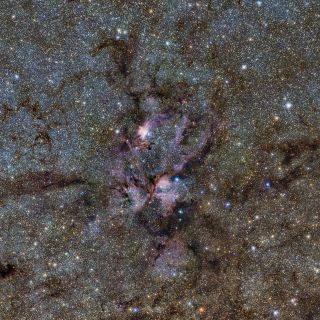
Another of the star-forming regions of the Milky Way observed by VISTA as part of the survey is Messier 17, also known as the " Omega Nebula ." Located around 6,000 light-years from Earth in the constellation of Sagittarius , this cloud of star-forming gas is around 15 light-years wide, but it is part of a wider cloud of matter that is about 40 light-years wide.
Get the Space.com Newsletter
Breaking space news, the latest updates on rocket launches, skywatching events and more!

Also packed with bright young stars are the dual nebulas of NGC 3603 , located around 20,000 light-years away, and NGC 3576 , also known as the "Statue of Liberty Nebula," located just 9,000 light-years away. NGC 3603 sits on one of the spiral arms of the Milky Way and just so happens to be one of the most massive young star clusters in our galaxy.

On the opposite end of the stellar age scale, the survey also captured images of more ancient stars.
Many of these are found in conglomerations called " globular clusters ." There are around 150 of these tightly packed ancient stars located in the Milky Way, thought to have formed from the same collapsing clouds of gas and dust.
One example of a globular cluster seen by VISTA as part of the 13-year-long survey is Messier 22 , also known as NGC 6656, located around 10,000 light-years away from Earth. The stars of Messier 22 are thought to be leftovers from the early universe. That makes them some of the oldest known stars.

Messier 22 has some features that make it stand out among other globular clusters, too. It is host to at least two stellar-mass black holes and six free-floating " rogue planets ," that aren't orbiting parent stars.
Additionally, Messier 22 is one of only four globular clusters that have been found to contain a planetary nebula . Despite the name, these have nothing to do with planets; they are actually the wreckage of massive stars that have exploded in tremendous supernova explosions .
— Early galaxies weren't mystifyingly massive after all, James Webb Space Telescope finds
— Listen to the eerie sounds of an exploded star in new NASA video
— James Webb Space Telescope strikes again, delivers new shining galaxy image
For the 420 nights that VISTA conducted the VVV and VVVX surveys, the telescope revised the same patch of sky repeatedly. This allowed scientists to precisely determine the positions of the objects above (and many others) and track how they move throughout the sky as well as how their brightnesses change over time. The result is a peek through the dust that often obscures our view of our own galaxy, and a revolutionary three-dimensional map of the Milky Way.
"The project was a monumental effort, made possible because a great team surrounded us," team leader Roberto Saito, an astrophysicist at the Universidade Federal de Santa Catarina in Brazil, said in the statement.
The team's research was published in the journal Astronomy & Astrophysics . The VVV data can be accessed here , while the VVVX data is available here .
Join our Space Forums to keep talking space on the latest missions, night sky and more! And if you have a news tip, correction or comment, let us know at: [email protected].
Robert Lea is a science journalist in the U.K. whose articles have been published in Physics World, New Scientist, Astronomy Magazine, All About Space, Newsweek and ZME Science. He also writes about science communication for Elsevier and the European Journal of Physics. Rob holds a bachelor of science degree in physics and astronomy from the U.K.’s Open University. Follow him on Twitter @sciencef1rst.
Gas and stars 'stolen' from galaxy in striking European Southern Observatory photo and video
The biggest galaxies live in our universe's supercluster 'cities'
This Week In Space podcast: Episode 130 — Dogs on Mars, Snakes on the Moon
- Helium3 Planetary Nebula are not formed by supernova explosions. They are created by a red giant puffing off its outer atmosphere while the core collapses into a white dwarf. No supernova required. Reply
- View All 1 Comment
Most Popular
- 2 Did dark matter help black holes grow to monster sizes in the infant cosmos?
- 3 Watch SpaceX launch Crew-9 astronaut mission to the ISS today
- 4 SpaceX, NASA 'go' for 1st astronaut launch to ISS from Cape Canaveral Space Force Station pad
- 5 Watch spectacular Comet Tsuchinshan-ATLAS rise during the early hours of Sept. 28 with this free livestream
Disney Will Bring “Star Trek” Into Their Disney+ Catalog
in Marvel , Movies & TV

It’s not just Star Wars holding down the sci-fi fort over at Disney+ (Disney Plus) anymore.

Related: Marvel Won’t Be Putting Out Another R-Rated Movie, Report Says
Within a century , The Walt Disney Company’s impact has expanded significantly, with the business end of the company debuting its own dedicated streaming service, Disney+ (Disney Plus), in late 2019. The company has forged a self-contained realm of entertainment and acquired franchises, ranging from Pixar Animation Studios’ Toy Story series to Lucasfilm’s Star Wars sagas and the highly lucrative Avatar franchise by James Cameron .

Following Chris Evans’ passing of the Captain America mantle and the retirement of Steve Rogers, coupled with the ultimate sacrifice of Tony Stark/Iron Man, Disney’s golden goose — the Kevin Feige-run Marvel Studios’ Marvel Cinematic Universe (MCU) — has Earth’s Mightiest Heroes now stand on the edge of the unknown as they journey through the Multiverse Saga.

The MCU first boldly ventured into streaming television, incorporating mainline movie actors into the new Marvel Television series. Phase Four officially began in 2021 with the highly anticipated release of WandaVision on Disney+ (Disney Plus). Proving popular with Marvel fans WandaVision is now set to expand the franchise with two exciting spinoffs.

Related: First Look at Doctor Doom in Brand-New Trailer Following RDJ’s Announcement
These include Vision Quest , which has an uncertain production timeline but was initially anticipated for release around 2025, and Agatha All Along , a spooky spectacle focused on Kathryn Hahn’s witchy character, Agatha Harkness, which just began releasing last week.
Now, in what is essentially a spinoff of the Guardians of the Galaxy , Disney will try something decidedly “Star Trek,” according to Brad Winderbaum, the head of Marvel Studios’ Marvel Television.
Disney Goes Star Trek With New Series

The upcoming new NOVA series, featuring an “ensemble of young leads,” will likely introduce the character of Richard Rider, who wields the Nova Force after the Nova Empire’s destruction in Guardians of the Galaxy Vol. 2 (2017).
Winderbaum opens up about the future of this new sci-fi-style series set within the MCU and states that “we want to get it right”:
We’re not gonna go on a show until we’re happy with a pilot, happy with a bible.
Brandon Davis of Phase Zero continues, asking how the “cosmic” side of the MCU will be explored in the new Marvel Television world and the “further out parts of the universe.” Winderbaum had this to say:
I mean, I’ve been really inspired by what Trek is doing over the last few years; I think their shows are incredible. That’s why we hired Terry to do Vision Quest with us.
Continuing about Nova specifically, Winderbaum adds:
But the Nova that’s being developed with now, it is really like, it’s an amazing ensemble piece. I shouldn’t say too much. It’s like, it’s a great cast of characters that like are you know, in a … it’s got shades of Trek, shades of Battlestar but also has like, it also feels like… If you know the comics you know how… heated let’s say that Richard Rider kind of world can get, and it certainly embraces all of it.
Richard Rider, introduced in The Man Called Nova #1 (1976), is a high school student who inherits powers from a dying Nova Corpsman (already seen in previous Guardians films), gaining abilities like flight, super strength, and energy projection.
Sam Alexander, introduced in Marvel Point One #1 (2011), plays significant roles in storylines like “Annihilation” and “The New Warriors” after discovering his father’s old Nova Corps helmet and gaining similar powers. He has since featured in series such as “Nova” and “Champions.” With rumors circulating that Ryan Gosling may join the MCU as Nova opposite Chris Pratt’s Star-Lord, excitement is building, and such a casting move would certainly draw major attention.
Watch the full interview with the cast and creatives of Agatha All Along and Brad Winderbaum below:
Nova, whether as Richard Rider or Sam Alexander in the Marvel comics, plays a pivotal role in the MCU’s upcoming NOVA project. Given his complex relationship with Peter Quill—who was last seen in Guardians of the Galaxy Vol. 3 (2023) — it’s likely that Chris Pratt’s Star-Lord will be brought back into the fold.
Beyond his ties to the Guardians of the Galaxy franchise, Nova also connects with the Ultimate Spider-Man series and has been involved in a love triangle with Apart from ties to the Guardians of the Galaxy franchise, Nova has connections to the Ultimate Spider-Man series and continuity as well as being involved in a love triangle between Gamora (Zoe Saldaña), Nova, and Star-Lord.
Are you excited to see this new Star Trek -like Nova series? Share your thoughts with us in the comments below!
More on Guardians of the Galaxy Vol. 3
Guardians of the Galaxy Vol. 3 , produced by Marvel Studios under The Walt Disney Company, marked the departure of former Marvel director James Gunn from the Marvel Cinematic Universe (MCU), as he has now taken on the role of CEO at Warner Bros. Discovery’s DC Studios — Marvel’s biggest rival.
The film brought back many beloved characters from the previous installments, Guardians of the Galaxy Vol. 1 (2014) and Guardians of the Galaxy Vol. 2 (2017).
Audiences reunited with Peter Quill, AKA Star-Lord (Chris Pratt), the gun-slinging human and former part-Celestial; Thanos’ daughters Gamora (Zoe Saldaña) and Nebula (Karen Gillan); the tree-like Groot (Vin Diesel); the cunning and adorable Rocket Raccoon (Bradley Cooper); the vengeful Drax the Destroyer (Dave Bautista); the empathetic Mantis (Pom Klementieff); and the returning Ravagers Kraglin Obfonteri (Sean Gunn) and Stakar Ogord (Sylvester Stallone). Even Cosmo the Spacedog (voiced by Maria Bakalova) made an appearance.
The Guardians faced new challenges as they encountered the radiant Adam Warlock, played by newcomer Will Poulter, alongside Elizabeth Debicki’s Ayesha. Chukwudi Iwuji portrayed the villainous High Evolutionary, supported by Nico Santos as his associate Theel.
The cast also featured Daniela Melchior as Ura, Kai Zen as Phyla-Vell , Linda Cardellini as Lylla the Otter, Asim Chaudhry as Teefs the Walrus, and Mikaela Hoover as Floor the Bunny , all former cellmates and friends of Rocket.

Ships Guide
Ship overview.
Building Ships
Assigning Ships
Upgrading Ships
Moving Ships
Finding Your Ships
Related articles
'We have changed the view of our galaxy forever': Astronomers capture most detailed ever infrared map of the Milky Way
Astronomers at the European Southern Observatory have released the largest infrared map of the Milky Way ever. The enormous dataset contains millions of new objects, and the researchers expect to scour it for discoveries for years to come.

Astronomers have created the most detailed infrared map of the Milky Way — and it contains more than 1.5 billion objects.
Made using 13 years of observations across 420 nights, the new map charts a vast number of stars, "failed" brown dwarfs, free-floating planets and hypervelocity suns launched into space after close encounters with our galaxy's central supermassive black hole .
The record-breaking map was stitched together from 200,000 images captured by the European Southern Observatory's (ESO) Visible and Infrared Survey Telescope for Astronomy (VISTA) telescope in Chile. The researchers published their findings Sept. 26. in the journal Astronomy & Astrophysics .
"We made so many discoveries, we have changed the view of our Galaxy forever," project lead and study co-author Dante Minniti , an astrophysicist at Universidad Andrés Bello in Chile, said in a statement .
Related: 10 discoveries that prove Einstein was right about the universe — and 1 that proves him wrong
To make the map, the astronomers used the VISTA InfraRed CAMera ( VIRCAM ), an infrared camera which peered through the dust and gas permeating the Milky Way to discover radiation from previously unnoticed sources.
— Gargantuan chunk of 'cosmic web' discovered. It's 50 million light-years long.
— How much of the universe is dark matter?
— Shredded 'stellar streams' could lead to the Milky Way's missing dark matter
This enabled the telescope to pick up the infrared glow from " failed stars " — objects that straddle the line between giant planets and small stars, also known as brown dwarfs — and gravitationally unbound rogue planets on hundreds of nights between 2010 and 2023. Repeat observations made in each region of the sky also enabled the team to track how objects move and how their brightnesses changed over time.
Sign up for the Live Science daily newsletter now
Get the world’s most fascinating discoveries delivered straight to your inbox.
The resulting dataset is massive: covering an area of sky equivalent to the width of 8600 full moons and containing about 10 times more objects than the map the same team released in 2012. Now that it has been completed, the researchers will await upgrades to VISTA and ESO's Very Large Telescope that will enable them to break incoming light down into its component spectra so that they can better understand the chemical compositions of the newly discovered objects.
Ben Turner is a U.K. based staff writer at Live Science. He covers physics and astronomy, among other topics like tech and climate change. He graduated from University College London with a degree in particle physics before training as a journalist. When he's not writing, Ben enjoys reading literature, playing the guitar and embarrassing himself with chess.
James Webb telescope spots rare 'missing link' galaxy at the dawn of time
Astronomers spot a possible 'future Earth' — 8 billion years into its future
'People should not be there': 'Unsurvivable' 20-foot storm surge predicted as ferocious Hurricane Helene heads to Florida
Most Popular
- 2 James Webb telescope spots rare 'missing link' galaxy at the dawn of time
- 3 Astronomers spot a possible 'future Earth' — 8 billion years into its future
- 4 Paramedics may not all be using the best method for defibrillation, study hints
- 5 Russian cosmonaut returns to Earth after completing record-breaking 1,111th day in space
September Infinite Incursions Pairings
By Bek 26 September 2024
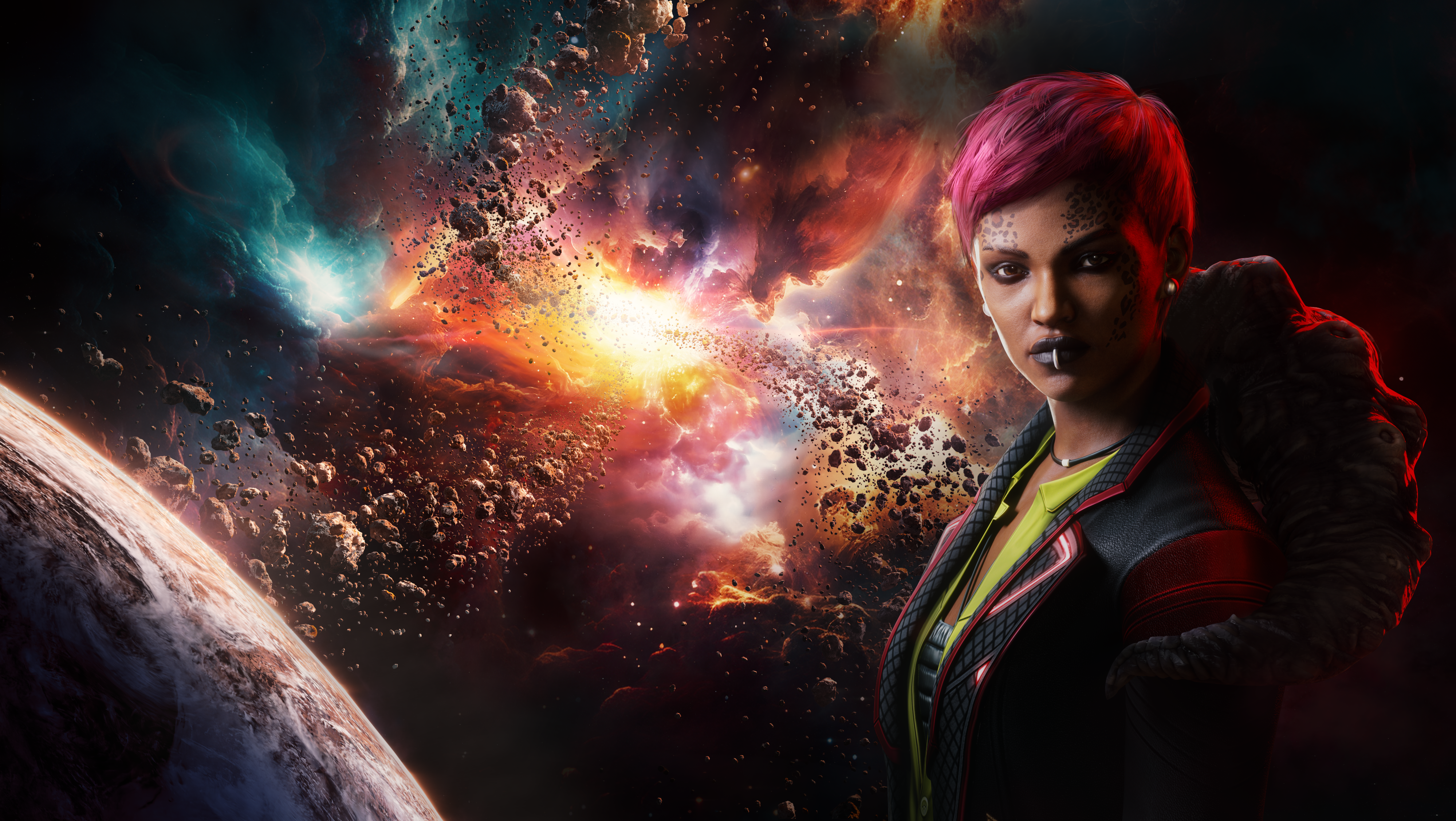
It’s that time again! From September 30-October 2 , work alongside your server to dominate the galaxy in this round of Infinite Incursions .
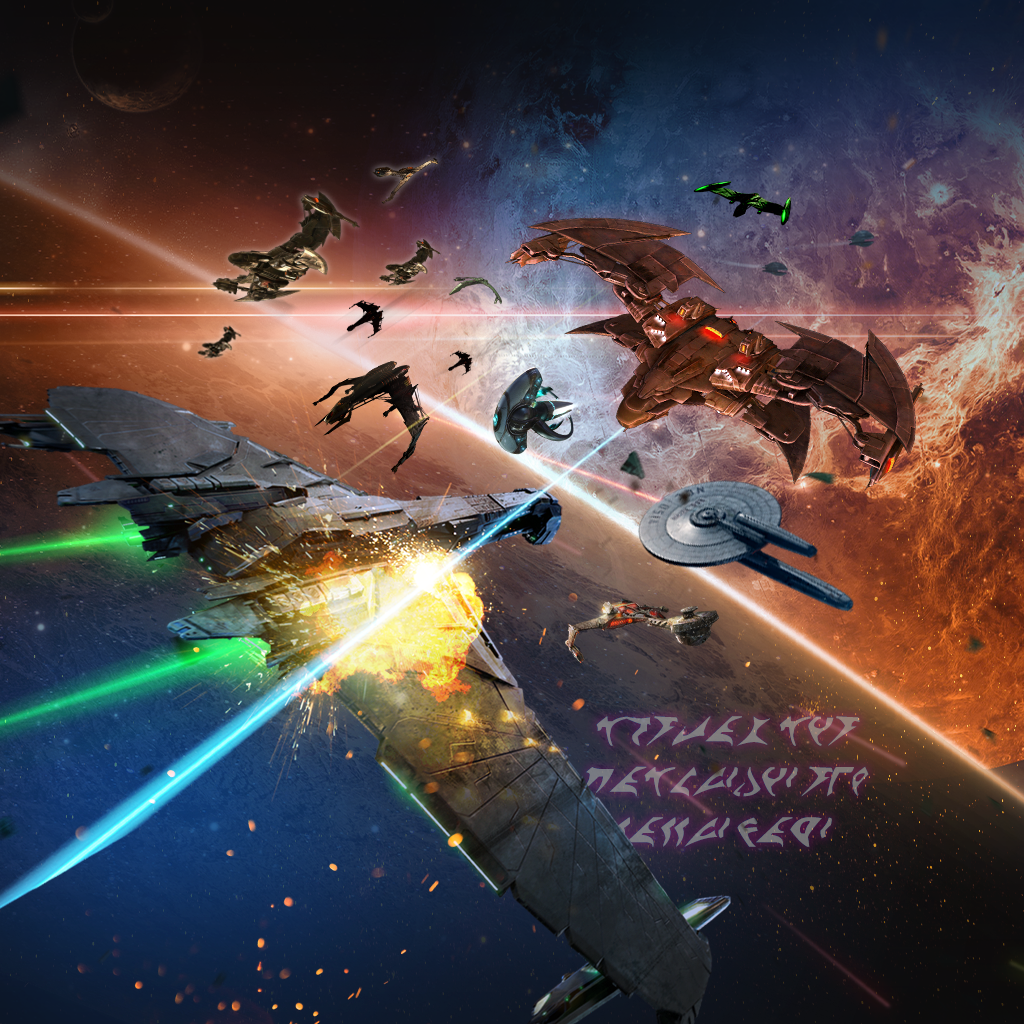
The pairings are as follows:

US-008 vs US-038
US-009 vs US-012
US-010 vs US-020
US-011 vs US-024
US-013 vs US-040
US-014 vs US-033
US-015 vs US-017
US-016 vs US-022
US-021 vs US-027
US-026 vs US-031
US-032 vs US-036
EU-400 vs EU-401
EU-104 vs EU-105
EU-106 vs EU-107
EU-108 vs EU-118
EU-109 vs EU-110
EU-112 vs EU-115
EU-121 vs EU-125
EU-126 vs EU-184
APAC-187 vs APAC-188
APAC-193 vs APAC-195
APAC-199 vs APAC-201
US-028 vs US-030
US-029 vs US-034
US-035 vs US-054
US-037 vs US-051
US-041 vs US-044
US-042 vs US-049
US-045 vs US-053
US-055 vs US-056
US-057 vs US-067
US-061 vs US-063
US-069 vs US-086
EU-130 vs EU-134
EU-131 vs EU-145
EU-132 vs EU-140
EU-133 vs EU-139
EU-135 vs EU-136
EU-137 vs EU-156
EU-138 vs EU-155
US-070 vs US-080
US-072 vs US-089
US-076 vs US-092
US-084 vs US-091
US-074 vs US-093
US-095 vs US-098
US-096 vs US-097
US-099 vs US-100
US-101 vs US-102
US-700 vs US-703
US-701 vs US-702
EU-142 vs EU-143
EU-152 vs EU-167
EU-153 vs EU-162
EU-157 vs EU-159
EU-158 vs EU-164
EU-163 vs EU-176
EU-168 vs EU-181
EU-172 vs EU-178
Good luck out there commanders!
LLAP The Star Trek Team
DON’t miss THESE from AROUND THE GALAXY
Important update on alliance tournaments leaderboards.
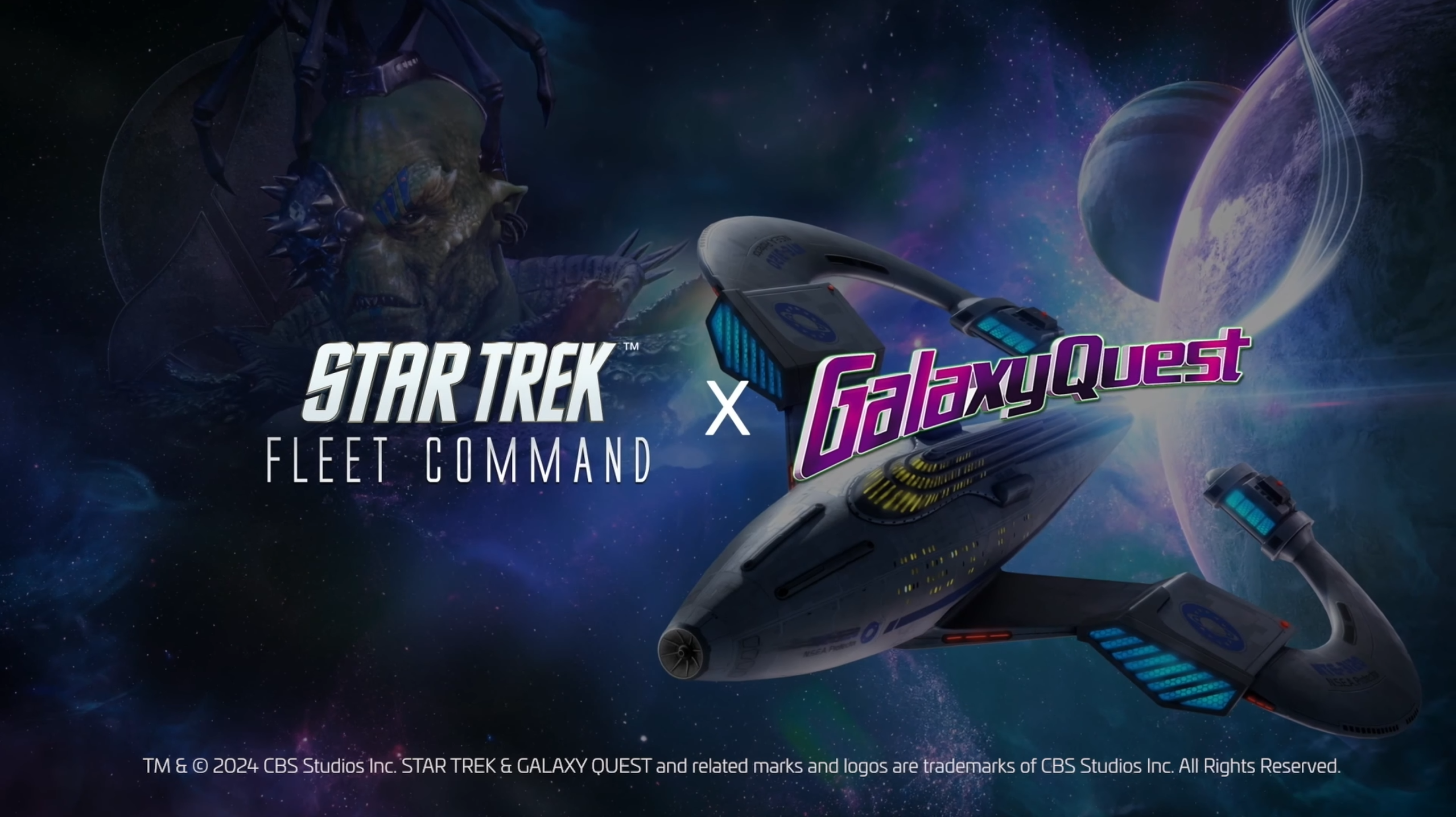
Trek Trivia - Never Give Up, Never Surrender
Alliance tournaments have returned, additions to the artifact gallery, take the conn, download star trek fleet command today.
- AVAILABLE FOR -
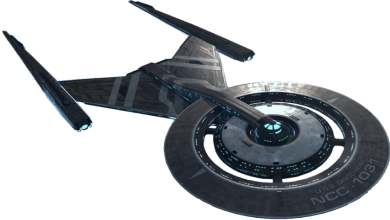
STAY INFORMED AND DON’T LOSE YOUR PROGRESS!
Subscribe for exclusive updates on our launches & more! Sync your progress across platforms and devices

IMAGES
VIDEO
COMMENTS
Click To Get My 10 Best Brilliant Maps For Free: Found via reddit. The map above is Shakaar's Alpha/Beta map v3.3; a fan-made creation showing the Alpha and Beta quadrants of the Star Trek universe. The map shows both major and minor powers that have appeared in the various series over the years. At the centre is the United Federation of ...
The presented tool is a patform to explore the known star trek galaxy. The sources are the official and semi-official ones as well as wikipedia, for the real spectral class (work is in progress for many of the star systems). If you zoom into one of the system (currently only Sol and Bajor have a complete orbital) you can see the planets orbits ...
WELCOME TO STARTREKMAP.COM, The home of the stellar cartography for the Star Trek-Universe, based on the Star Trek Star Charts. This website is privately owned, non-commercial, unofficial, dedicated to the Star Trek-franchise and attempting to offer corrected and updated Star Charts for the known universe in the well-known LCARS-style.
The Star Trek galaxy explained that apart from the Romulans and the different versions of the Klingons, the Beta Quadrant's highlight is Vulcan, the native planet of Spock and other members of the Vulcan species.Multiple Star Trek encyclopedias suggest that Vulcan is located in a Sector of the same name within the Beta Quadrant. The 2002 publication Star Trek Charts also estimates Vulcan's ...
The galaxy quadrants. Most of the action in the Star Trek canon takes place within our galaxy, the Milky Way, which has been divided into its famous four primary quadrants, each named after a ...
The Milky Way Galaxy is a spiral galaxy which is roughly 100,000 light years in diameter and is divided into four quadrants (α, β, γ, δ), defined by two meridian passing through the galactic core. Containing over 400 billion stars, only 23.25 out of 1,000,000 planets found in those star systems support intelligent life, which may develop a ...
An overview of the entire galaxy. Gamma Quadrant. The Gamma Quadrant was first surveyed by the Quadros-1 probe, launched during the 22nd century. After initial discovery of the Bajoran Wormhole in 2369 extensive exploration began, which unfortunately also led to one of the most devastating wars in Federation history: The Dominion War. Local Space.
Created: 8-3-1999. The Star Trek Cartography is the biggest source on information, data, programs and maps concerning the galactic geography in the internet. The mission of this project: to give the fans insight into the structure of the Star Trek universe for the first time, using all official facts, the episodes and the "real" astronomy in ...
Official Star Trek maps. The 4 quadrants: The Star Trek galaxy: The Milky Way: from the Omnipedia CD-ROM: from the Star Trek Encyclopedia Second Edition CD-ROM: from the ST:DS9 TM: taken from the Internet: taken from the Internet: scanned by Webmaster: 292 x 292 px, GIF, 26.5 KB: 292 x 292 px, GIF, 37.7 KB ...
Star Trek Galactic Map. Here's the current map of Star Trek Federation Space and the Taurus Reach I'm using. I might make my own at some point. Download the full Galaxy Map PDF (9 Meg). The Taurus Reach. Galactic Map Directions. Galactic Territories. Galactic Map. Print to PDF.
Star Trek Maps is a set of four maps and an Introduction to Navigation booklet. Possibly the most technical Star Trek book ever produced, the booklet introduces the reader to galactic coordinates and basic vector calculus. The maps themselves are well researched and properly projected to 2D. The maps also include a list of Federation members and an overview of various planets visited in the ...
The Milky Way Galaxy was one of two trillion galaxies believed to exist. The number of stars it contained was variously estimated to be over three billion to over four hundred billion stars. It generated its own magnetic field, which experienced dips and peaks. The galaxy was 100,000 light years wide. (TNG: "Pen Pals"; VOY: "Inside Man"; ENT: "Azati Prime"; PIC: "Absolute Candor") The Milky ...
Star Trek Maps is a reference work demonstrating the stellar cartography and navigation system featured on the Star Trek television series, ... Sidebars include projections (called "Astrogation") of the coordinate system for the galaxy explained in the booklet. Chart B - Named Planets and their Primaries, and Planetary Descriptions ...
In stellar cartography, a quadrant is a major region of space encompassing a portion of a galaxy. The Milky Way Galaxy was commonly divided into four equally sized, cubic quadrants, defined by one meridian passing through the galactic core and a second one perpendicular to the first, that also passes through the galactic core. These four quadrants are referred to as the Alpha Quadrant, Beta ...
Basically, in our Galaxy there is only a fistful of sufficiently large interstellar empires that take up more than one pixel in a map at all and can therefore be drawn in. Due to their low number and their distribution in the whole Milky Way, most of the area of a map of the Star Trek Galaxy remains blank - unexplored or neutral space, in which ...
My Version of the Star Trek Galaxy. The changes that I've made to the layout of the Star Trek galaxy have largely been made for the specific purpose of reducing the implausibility of some of the distances travelled to manageable levels. As a result, the known space in the Alpha and Beta Quadrants is compressed together, and the most frequently ...
On some Star Trek maps of the center of the galaxy, the galactic core is regarded as its own area, not part of any of the four Quadrants. The Cytherians, from the Next Generation episode "The Nth Degree," are located near this area. In Star Trek V: The Final Frontier, a "God"-being is encountered from within what is called the "Great Barrier".
Star Trek: Stellar Cartography (2013), a collection of ten 24″×36″ folded maps. (Note that I haven't seen any of these maps.) Online, Star Trek Dimension's Cartography section has maps from the series as well as Christian Rühl's Galactic Atlas. StarTrekMap.com, a fan site that appears to be based on Star Trek: Star Charts, uses an ...
Warp Scale: Crusher TNG. Warp Factor. Engine Score. Power Requirement. Speed. Time. vpn_key Map Key. The galaxy is divided into four quadrants (α, β, γ, δ), defined by two meridian passing through the galactic core. The quadrants are divided into sectors, a sector is typically 20x20x20 light years in size and is assigned a number when charted.
It is challenging and daunting. Fortunately, another group of Star Trek superfans developed a tool that Trekkies have been using for years to get around the galaxy. This handy stellar cartography tool can be used to take your Star Trek Adventures game to the next level at warp speed. Peruse startrekmap.com. Play with the interface.
The Shape of the Milky Way - The Evidence. There are two methods traditionally used to map the spiral structure of our Galaxy. The first method is to study the density of the neutral hydrogen (HI) in the plane of the Galaxy which is enhanced in the spiral arms. This was first attempted by Jan Oort, Frank Kerr, and Gart Westerhout in 1958.
Star Trek Fleet Command Interactive Map. A map made for Star Trek Fleet Command by Scopely.
NoFunShogun. Star Trek maps never make sense in the context of the Dominion War and DS9. If this map were true, then the Bajor system would be an entire Federation away from the Romulans and Klingons (aka months and months of warp speed travel away) when in the context of the show that'd make no sense (the impression being that Klingon space is ...
The new map of the Milky Way covers objects such as ... NGC 3603 sits on one of the spiral arms of the Milky Way and just so happens to be one of the most massive young star clusters in our galaxy.
It's not just Star Wars holding down the sci-fi fort over at Disney+ (Disney Plus) anymore. Related: Marvel Won't Be Putting Out Another R-Rated Movie, Report Says Within a century, The Walt ...
Locked warp paths throughout the galaxy: Rigel - Rainsford, Rainsford - Lydan, Rainsford - Raddan, Lydan - Tera Lara, and Raddan - Tera Lara: unlocked by completing the mission "Retrofit". This mission belongs to a chain that starts with the mission "Uncaged". To get the first mission and begin the chain you can visit one of the following ...
Emerging from the depths of the Galaxy, the Forbidden Tech is a set of dangerous collectibles you can add to your arsenal! Engage with Q's Trials to unlock some of the most devious, illicit, and potentially unstable technology ever found in the universe to bolster your ship's capabilities. Unlocking Forbidden Tech
As you get more ships and explore more of the Galaxy, it may get harder to keep track of where your ships are. You can always view the location of each ship by tapping on that ship's icon on the bottom center of your screen when you're looking at a map view.
The resulting dataset is massive: covering an area of sky equivalent to the width of 8600 full moons and containing about 10 times more objects than the map the same team released in 2012. Now ...
The Star Trek Team. DON't miss THESE from AROUND THE GALAXY News 25 September 2024. Important Update on Alliance Tournaments Leaderboards . News 21 September 2024. Trek Trivia - Never Give Up, Never Surrender . News 20 September 2024. Alliance Tournaments Have Returned!